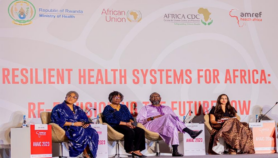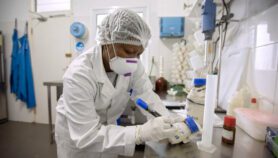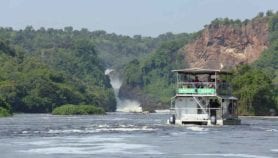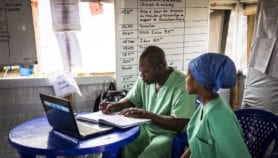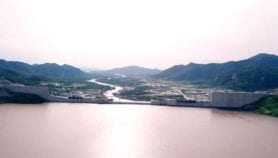Send to a friend
The details you provide on this page will not be used to send unsolicited email, and will not be sold to a 3rd party. See privacy policy.
Developing countries are making good progress on nanotech for clean water, say Paulo Sergio de Paula Herrmann Jr. and José Antônio Brum.
Water shortages, unreliable water supplies and poor water quality are major obstacles to sustainable development. Millions of children die each year due to water shortages or exposure to water-related diseases. And the UN predicts that by 2025, more than one third of the world’s population — over 3.5 billion people — will face severe water shortages.
Nanotechnology can help alleviate these problems by offering new techniques and equipment for conducting water research as well as new purification methods.
While some nanotech water treatments are being developed in Europe, Japan and the United States — researchers at US-based Rice University have, for example, created a nano-based product to remove arsenic from water supplies (see ‘Nanotechnology for clean water: Facts and figures‘) — developing countries too are investing in research to harness nanotechnology for clean water.
Joint action
The IBSA nanotechnology initiative — a collaborative research and development programme between the Departments of Science and Technology in India, Brazil and South Africa — shows how South-South collaboration can promote the use of nanotechnology for clean water and points to progress being made in these countries.
IBSA identifies three areas of research as high priority: nanofiltration and ultrafiltration membranes; nano-based water purification systems for remote and rural areas; and carbon nanogels, nanotubes and nanofibres.
While carbon nanotube projects are still in the early phases of planning, progress in the other priority areas is well under way.
In the field of nanofiltration, South Africa’s North-West University has built a treatment plant that incorporates ultrafiltration membranes to clean brackish groundwater in a ruralvillage. The plant removes pollutants such as chloride, nitrate, phosphate and sulphate to produce safe drinking water for domestic and community use(see ‘Community ownership is key to nanotech water projects‘).
In Brazil the Brazilian Agricultural Research Corporation, Embrapa, is hoping to develop a biodigestion system using nanofilters to clean irrigation supplies and, eventually, make the water safe for drinking.Biodigestion, without nanofilters, is already used to treat sewage in both rural and urban areas.
Embrapa is also developing magnetic nanoparticles to treat water contaminated with pesticides. This class of technology seems especially suitable for removing organic pollutants, salts and heavy metals from liquids.
The sensor market
Another area of interest to IBSA is to combine micro- and nano-fabrication technology with new sensor technology to create small, disposable, portable, and highly accurate sensors for detecting chemicals and biochemicals in water.
The potential impact of nanotechnology on the sensor market is huge in the developing and developed world alike. For example, industry analyst NanoMarkets reports that nanotech sensors generated global revenues of US$2.7 billion in 2008 and estimates it will reach US$7.2 billion in 2012.
In Brazil, The National Nanotechnology Laboratory Applied to Agribusiness, housed at Embrapa’s agricultural instrumentation unit in São Paulo, has developed a cheap optical sensor incorporating nano-assembled films to evaluate the acidity of natural water supplies. And ‘electronic tongues’ —another kind of polymer sensor developed at Embrapa — can be used to distinguish between different mineral waters and between pure water and water contaminated by organic matter.
Nanotechnology can have a great impact on our lives, promising benefits and, perhaps, risks. We have to consider both if we are to exploit this new technology to its full extent.
Developing countries have as much to contribute as more developed regions of the world, and while much research remains to be done, the IBSA initiative shows we are already on the way to finding nano-based solutions to clean water.
Paulo Sergio de Paula Herrman Jr. is a researcher at Embrapa Agricultural Instrumentation, Brazil and José Antônio Brum is director of the Brazilian Synchrotron Light Laboratory. Both are team members of IBSA.




